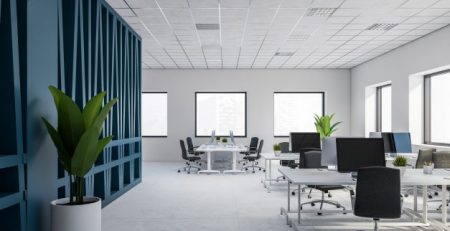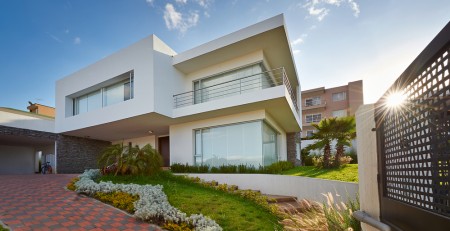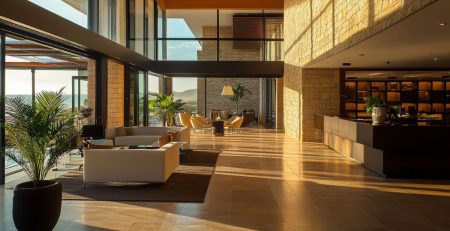An Introduction to Signage for Architects, Project Managers & Builders
Signage is an integral part of our built landscapes, from wayfinding signs to branding. Often acting as a complement to buildings and infrastructure, signage can enter our collective consciousness in the same way iconic buildings can, whether it’s the cheerfully informative blue plaques that pepper our landscape with historical titbits, or the hugely recognisable London Underground roundel that heralds every station.
In this way, signage plays a role in influencing the way people perceive the environment they navigate, creating a strong relationship between signage and architecture. As our cities and buildings grow more intricate and complex, well placed, effectively designed and aesthetically coherent signage has an increasingly important role in determining how people experience a particular space.
When signage is done right, a person will feel that their journey through a building is intuitive and effortless, which adds to their overall sense of how well designed and attractive a building is. A lack of (or poorly designed) signage, on the other hand, can profoundly impact the way a building feels overall – creating a sense of disorientation and insecurity. This gives signage a considerable influence over factors such as functionality, aesthetics and overall atmosphere in a completed building.
With some forms of signage resilient enough to outlast the structures they’ve been made for, learning more about signage can help architects, builders and project managers envisage how this often small but vital element will inform (and be informed by) their wider projects.
 Materials and Signage Types
Materials and Signage Types
Signage can appear in a variety of forms and materials, each created to best serve the functional and design requirements demanded by any particular project. For example, for those looking for permanent signage solutions, vitreous enamel signs are likely to be best placed to facilitate these needs.
Vitreous enamel has been used in various forms for thousands of years, and involves the fusion of glass to a substrate by applying extremely high temperatures. In the case of signmaking, powered glass is fused to stainless steel by skilled craftsmen in order to create one of the most powerful, durable and reliable materials in the sign-making industry. The resulting signs are graffiti-proof, low maintenance and fade-resistant, making it the go-to choice for much of the signage in public spaces.
Alternatively, projected and illuminated signage suits projects where it is important that signage is as eye catching as possible – whether that’s guiding people to the correct destination even in low light, or to stand out from competitors on a busy highstreet. Hoardings, on the other hand, provide a short-term solution for the construction industry to obscure building sites and provide a means through which to advertise or share information about the ongoing project within.
In the case of vitreous enamel cladding, the purposes and aims between construction and signage can blur, as manufacturing considerations such as building longevity and protection from the environment combine with the potential to add wayfinding, branding or even purely artistic elements on a large scale.
Planning and Design
All signage needs to fulfill its intended functional role (whether that’s communicating a brand or getting people from A to B) in the most effective and well designed way – both being noticeable enough to alert people to it’s presence while seamless enough to work in harmony with its environment. It is therefore no surprise that some of the most famous and admired pieces of graphic design have been signage or wayfinding solutions – from the Hollywood Hills to the London Underground.
While signage consultants can (and often do) work retroactively to provide successful signage solutions to existing buildings and public spaces, the relationship between signage and architecture means that it can be useful to plan together from the outset of a project where possible. Some of the factors that need to be taken into account when thinking about signage are:
-
- The functional requirements of any potential signage. The overall design of the building is key to identifying vital factors such as the needs of users and ideal traffic flow. In retail spaces, the customer journey will be important, while in transport hubs understanding the quickest exit routes and making signage easily understood across cultures takes priority.
- The purpose of the building or space. The ultimate design of signage throughout a building is going to be highly informed by the type of activity happening within that building. For example, there will be distinct differences between signage in a place of work than that used in a more relaxed space, such as a gallery.
- The surrounding environment. To choose the ideal material, colour, typeface and overall design it is important to understand the surrounding environment in both practical and aesthetic terms. This helps signage consultants take into account considerations such as lighting, positioning and any potential challenges in installation, and they can guide architects and project managers towards the best fit for their circumstances.
- User experience: By considering the relationship between signage and the wider design of the building from an early stage, it is possible to use signage as a unifying element that creates a holistic experience and enhances the overall atmosphere of a building.
It is possible to implement signage in some extremely inventive and creative ways, from making it part of the actual structure of a building to using it to surprise and interest customers on their way around a shop floor. Whether the project calls for an unobtrusive yet functional outcome, or an ostentatious design feature, by embracing signage as an opportunity rather than an afterthought, professionals in the construction industry can collaborate with signmakers to create the most effective solution possible.











